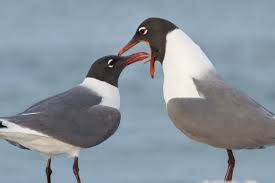Se-tenant: Southern Royal Albatros and Stephen's Lorikeet (Aitutaki 1982)
Southern Royal Albatros and Stephen's Lorikeet (Aitutaki 1982)
14 January (Aitutaki ) within release Definitive goes into circulation Se-tenant Southern Royal Albatros and Stephen's Lorikeet face value 2*50 Cook Islands cent
| Se-tenant Southern Royal Albatros and Stephen's Lorikeet in catalogues | |
|---|---|
| Michel: | Mi: CK-AI 398-399 |
| Stamp Number: | Sn: CK-AI 244a |
Se-tenant is square format.
Also in the issue Definitive:
- Stamp - Tahiti Reed-warbler (Conopoderas caffra caffra) face value 35;
- Stamp - Buff-banded Rail (Galirallus philipensis goodsoni) face value 40;
- Stamp - Polynesian Triller (Lalaga maculosa pumila) face value 40;
- Stamp - Southern Royal Albatros (Diomedea epomophora) face value 50;
- Stamp - Stephen's lorikeet (Vini stepheni) face value 50;
- Stamp - Red-headed Parrotfinch (Erythrura cyaneovirens) face value 70;
- Stamp - Pomarine Skua (Stercorarius pomarinus) face value 35;
- Stamp - Orange Fruit Dove (Chrysoena victor victor) face value 70;
- Se-tenant - Tahiti Reed-warbler and Pomarine Skua face value 2*35;
- Se-tenant - Buff-banded Rail and Polynesian Triller face value 2*40;
- Se-tenant - Red-headed Parrotfinch and Orange Fruit Dove face value 2*70;
- Se-tenant - Southern Royal Albatros and Stephen's Lorikeet face value 2*50;
Se-tenant Southern Royal Albatros and Stephen's Lorikeet it reflects the thematic directions:
Animals are multicellular, eukaryotic organisms of the kingdom Animalia (also called Metazoa). All animals are motile, meaning they can move spontaneously and independently, at some point in their lives. Their body plan eventually becomes fixed as they develop, although some undergo a process of metamorphosis later on in their lives. All animals are heterotrophs: they must ingest other organisms or their products for sustenance.
Birds (Aves), a subgroup of Reptiles, are the last living examples of Dinosaurs. They are a group of endothermic vertebrates, characterised by feathers, toothless beaked jaws, the laying of hard-shelled eggs, a high metabolic rate, a four-chambered heart, and a strong yet lightweight skeleton. Birds live worldwide and range in size from the 5 cm (2 in) bee hummingbird to the 2.75 m (9 ft) ostrich. They rank as the class of tetrapods with the most living species, at approximately ten thousand, with more than half of these being passerines, sometimes known as perching birds. Birds are the closest living relatives of crocodilians.
Gulls, or colloquially seagulls, are seabirds of the family Laridae in the suborder Lari. They are most closely related to the terns and skimmers and distantly related to auks, and even more distantly to waders. Until the 21st century, most gulls were placed in the genus Larus, but that arrangement is now considered polyphyletic, leading to the resurrection of several genera.An older name for gulls is mews, which is cognate with German Möwe, Danish måge, Swedish mås, Dutch meeuw, Norwegian måke/måse, and French mouette, and can still be found in certain regional dialects
Parrots (Psittaciformes), also known as psittacines (/ˈsɪtəsaɪnz/), are birds with a strong curved beak, upright stance, and clawed feet. They are classified in four families that contain roughly 410 species in 101 genera, found mostly in tropical and subtropical regions. The four families are the Psittaculidae (Old World parrots), Psittacidae (African and New World parrots), Cacatuoidea (cockatoos), and Strigopidae (New Zealand parrots). One-third of all parrot species are threatened by extinction, with a higher aggregate extinction risk (IUCN Red List Index) than any other comparable bird group Parrots have a generally pantropical distribution with several species inhabiting temperate regions as well. The greatest diversity of parrots is in South America and Australasia




